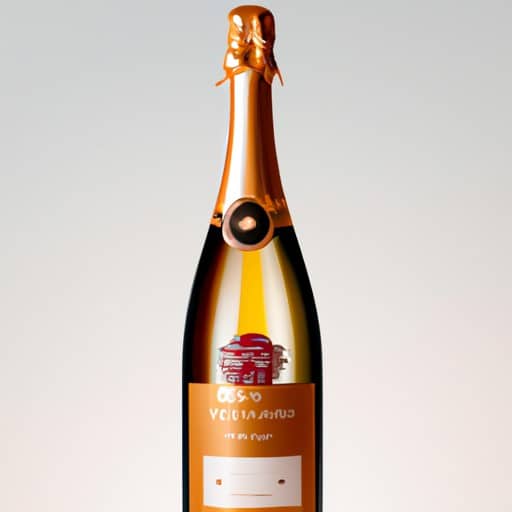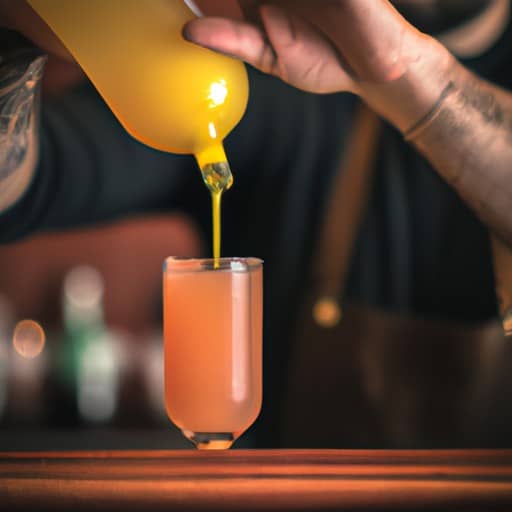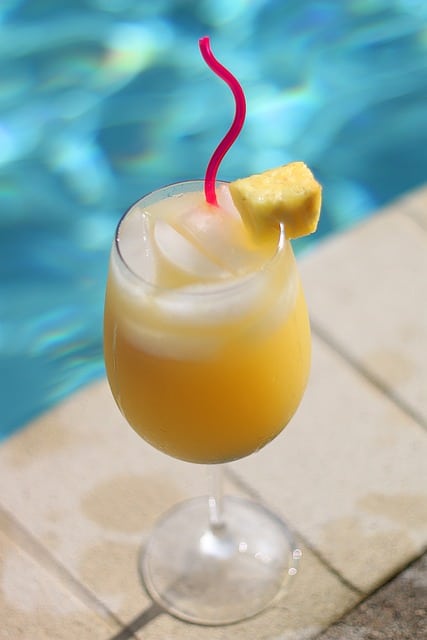The Mimosa cocktail, a timeless concoction of champagne and orange juice, has been a staple at brunches and celebratory events for decades. But what makes it so tantalizingly tasty? This blog post uncovers the secrets behind the alluring taste of the Mimosa cocktail, delving into its ingredients, preparation process, and the perfect balance it strikes between sweetness and acidity.
1. ‘The best wines are the ones we drink with friends’ – Why does the quality of champagne matter?
When it comes to enjoying a Mimosa cocktail, the quality of champagne used plays a crucial role in delivering a truly delightful taste experience. Champagne, known for its effervescence and sophistication, is the key ingredient in a Mimosa cocktail. The quality of champagne matters because it directly impacts the overall flavor profile of the drink.
First, high-quality champagne is made with utmost attention to detail, using the finest grapes and traditional winemaking techniques. These factors contribute to a more refined and complex flavor profile, with notes of citrus, apple, and brioche. The subtle nuances in the taste of champagne can elevate the Mimosa, making it a more enjoyable and well-rounded cocktail.
Secondly, the quality of champagne also affects the level of carbonation in the drink. A good champagne will have a consistent and lively effervescence, which adds a refreshing and bubbly texture to the Mimosa. On the other hand, lower quality champagnes may lack the same level of carbonation, resulting in a flat and less vibrant cocktail.
Finally, the quality of champagne can also impact the overall mouthfeel of the Mimosa. A well-crafted champagne will have a silky and smooth texture, creating a velvety sensation on the palate. This luxurious mouthfeel enhances the overall drinking experience and adds a touch of elegance to the Mimosa.

1. A photo of a champagne bottle with a label indicating it’s high quality.
2. Fresh from the Grove: How does the quality of orange juice affect the taste?
When it comes to making a delicious Mimosa cocktail, the quality of orange juice is just as important as the champagne. The freshness and quality of the orange juice directly impact the taste and overall experience of the drink. Let’s explore how different factors affect the taste of orange juice and, in turn, the Mimosa.
- 1. The Source of the Oranges:
The source of the oranges used to make the juice can greatly influence its taste. Oranges that are grown in optimal conditions, such as sunny groves, tend to have a sweeter and more vibrant flavor. These oranges are typically juicier and have a higher natural sugar content, which translates into a more flavorful Mimosa. - 2. Processing Methods:
The way orange juice is processed can also affect its taste. Freshly squeezed orange juice, made from hand-picked oranges, tends to have a brighter and more pronounced citrus flavor. On the other hand, commercially processed orange juice, which undergoes pasteurization and may contain additives, can have a more subdued taste and may lack the natural freshness of freshly squeezed juice. - 3. Pulp Content:
The level of pulp in orange juice can vary and can influence the taste and texture of the Mimosa. Some prefer a smooth and pulp-free Mimosa, while others enjoy the added texture and slight bitterness that comes from a higher pulp content. Ultimately, the choice of pulp content depends on personal preference and the desired mouthfeel of the cocktail.
3. ‘Shaken, not stirred’ – Does the preparation process influence the taste?
The preparation process of a Mimosa cocktail can indeed influence its taste. The traditional method of preparation involves gently pouring champagne over orange juice in a flute glass. However, some variations call for shaking the mixture in a cocktail shaker with ice before straining it into the glass.
The choice between shaking and stirring can impact the taste and texture of the Mimosa. When shaken, the cocktail becomes frothy and aerated, resulting in a lighter and more effervescent drink. This can enhance the overall experience by creating a refreshing and bubbly sensation on the palate. On the other hand, stirring the cocktail gently preserves the natural carbonation of the champagne and maintains a smoother texture.
Additionally, the process of shaking the cocktail can also affect the flavor. The agitation from shaking can slightly alter the molecular structure of the mixture, which may lead to a more integrated and harmonious blend of flavors. The shaking process can also help to combine the champagne and orange juice more thoroughly, ensuring a consistent taste throughout the cocktail.

3. A photo of a bartender expertly mixing a Mimosa cocktail.
4. How does serving temperature play a role in the overall taste experience?
The temperature at which a Mimosa cocktail is served plays a significant role in the overall taste experience. The ideal serving temperature for a Mimosa is typically chilled, as it enhances the flavors and aromas of the ingredients. When served cold, the champagne and orange juice blend together seamlessly, creating a harmonious and refreshing drink.
The cold temperature of the cocktail helps to preserve the natural acidity and effervescence of the champagne, ensuring a crisp and lively taste. The chilled orange juice also maintains its vibrant citrus flavors, which complement the champagne perfectly.
On the other hand, serving the Mimosa at a warmer temperature can dull the flavors and diminish the overall enjoyment of the drink. Higher temperatures can cause the champagne to lose some of its carbonation, resulting in a flatter and less lively taste. The orange juice may also become less refreshing and vibrant as it warms up.
It’s worth noting that serving temperatures can vary depending on personal preference. Some individuals may prefer their Mimosa slightly warmer to allow the flavors to develop and evolve, while others may prefer it extra chilled for a more invigorating experience. Experimenting with different serving temperatures can help determine the ideal balance that suits individual taste preferences.
In conclusion, the delightful taste of the Mimosa cocktail is a result of a careful blend of high-quality champagne, fresh orange juice, and the perfect serving temperature. Its simplicity belies its taste complexity, offering a refreshing and light beverage that appeals to various palates. Whether at a brunch get-together or a special occasion, a well-made Mimosa never fails to delight.


